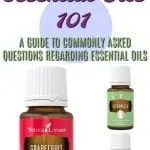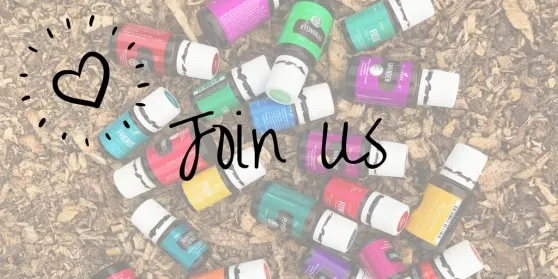Perhaps you have heard the term “essential oil” but you have no idea what it is. It’s okay because I was once there too! That is why I wrote this Essential Oils 101 page to help you understand what essential oils are and answer a few commonly asked questions! Of course, if I missed anything that you are dying to know, just leave a comment below and I will get back to you shortly!
Essential Oils 101
What are essential oils?
Essential oils are natural oils derived from plants. These oils are used for a variety of reasons, depending on what the oil itself is. For example: Lavender essential oil is derived from lavender flowers. And according to research, it takes 150 pounds of these flowers to just create one pound of your favorite lavender essential oil (assuming the oil is all oil and not made with fillers).
What are they used for?
Essential oils are used for everything from cleaning items around your home to promoting everyday wellness. For example, instead of going to the doctor to treat a migraine, one might use peppermint oil as a way to help relieve pressure caused by a headache. Or if a person has sleeping issues, they might use lavender oil to help wind down and calm the mind and body to promote healthy sleeping patterns.
Are all essential oils created equal?
This is a big “NO”—all essential oils are not created equal. In fact, it can be hard to tell what a great essential oil is and what’s not from just looking at it. However, there are several companies who stand by their product and can tell you exactly what’s in a bottle of their essential oil. Unfortunately, there are a lot of essential oils that are sold at various health food stores that have nothing but fillers in them. And in essence, you are wasting your money because you are not going to get better by any means by putting fillers on or in your body. I highly recommend Young Living essential oils simply because they are pure and well-known for the quality of their oils (will talk about that more later).
Are essential oils safe to use?
Yes! When properly used for their intended purpose, essential oils are perfectly safe to use. In fact, they are pure (when purchasing from a reputable company) which means they are natural oils derived from plants and are often safe for topical use and/or ingestion. Just ensure you are buying quality oils AND are reading all labels to ensure proper care and use of the oil you choose.
What is “EO”?
EO is just an abbreviation for essential oil. 🙂
What is a “carrier oil”, what does it do, and why should I use it?
A carrier oil is a vegetable oil such as coconut oil or grapeseed oil that can be used to dilute EO. YL V-6 Vegetable Oil Complex is an excellent carrier oil for all applications. Carrier oils ensure that EOs applied topically are comfortable. Dilution with a carrier oil does not dilute the effect of the EO, and prevents waste due to excessive application. Vegetable shortening, butter, margarine or petroleum derivatives (petrolatum jelly) should never be used as carrier oils. Some consumers choose to avoid olive oil as a carrier oil because of its strong aroma and thick viscosity.
What is a hot oil?
“Hot oils” are oils that, when applied to the skin, can cause a hot or burning sensation. It is often recommended that you use a patch test procedure prior to first use. To perform a patch test, apply 1-2 drops of EO to a patch of skin such as the forearm. Observe that area of skin over the course of 1-2 hours for any noticeable reaction; usually reactions occur within 5-10 minutes. If you experience a hot or burning sensation or if you develop a rash, add V-6 carrier oil to the affected area as often as needed. Examples of “hot” oils include cinnamon, clove, lemongrass, peppermint, oregano, thyme, Exodus II, and Thieves.
What if I experience skin discomfort or irritation while using essential oils?
If discomfort or irritation occurs, stop using the EO, and apply V-6 or other carrier oil to the affected area. Never use water in an attempt to flush the oil off the skin, as this may increase discomfort. If a rash occurs this may be a sign of detoxification; drink adequate water to encourage the release and removal of body toxins. Toxins present in petrochemical based soaps and skin care products, detergents and perfumes may trigger some of the detoxification reactions. Consider discontinuation of these agents if a reaction occurs. Before using the EO again, perform a patch test (see above) and dilute with carrier oil as needed. Water drives oil into the skin and the eyes. If EO gets in your eye, flush with V-6 carrier oil to alleviate any discomfort. Discomfort should be alleviated within minutes. If eye discomfort does not subside within 5 minutes, please seek medical attention. Be aware that some documents suggest diluting the oil with water. YL suggests that you dilute with carrier oil to ensure that discomfort is alleviated as quickly as possible.
Can essential oils be used during pregnancy or while nursing?
As with any medical condition it is strongly recommended that, prior to use of essential oils, you seek the advice and recommendation of a competent, trained health care advisor who is experienced in EO usage. It is generally recommended to avoid overuse and excessive use of Clary Sage (Salvia sclarea), Sage (Salvia officinalis), Tansy (Tanacetum vulgare), Hyssop (Hyssopus officinalis), Fennel (Foeniculum vulgare), and Wintergreen (Gaultheria procumbens) as well as the blends and supplements that contain these oils.
Can essential oils be used on children?
Many EOs are appropriate for use with children, and they should be diluted prior to use. Some YL products are pre-diluted with carrier oil as indicated on product label and are intended for direct application on children. Children generally respond well to EO, and use of a carrier oil is recommended. One-2 drops of EO such as SleepyIze, RutaVala, Gentle Baby and Peace & Calming may be diluted in carrier oil and applied to the bottom of the feet.
How does exposure to sun affect essential oil use?
Some EOs, especially citrus oils, contain natural molecules that react with sunlight (UV light) and cause a sensitivity reaction. All YL EOs and oil blends that contain these compounds are labeled with a warning to avoid sun/UV light for 12 to 48 hours after applying. Caution should always be used when starting to use a new oil: use patch testing (see above), dilute and apply the oil to skin that is protected from sun/UV exposure to reduce the risk of sensitivity. YL beauty and cosmetic products are formulated to remove sun-sensitizing agents to reduce the risk of sun sensitivity.
What about the use of essential oils if I have a medical condition? Can essential oils interact with prescription medications?
If you have a disease or medical condition, or if you are using a prescription medication, it is recommended that you consult with a health advisor who has experience with EOs prior to using an EO. Seek the advice of the prescribing physician and a pharmacist about potential interactions between the medication(s) and the essential oil(s).
This is a basic overview of essential oils, but there is a lot more that factors into essential oils and their use. How do you use essential oils and do you have any tips to share?
Want to know more? Head over to my Young Living Essential Oil page to learn how to purchase oils and how to join my team!

